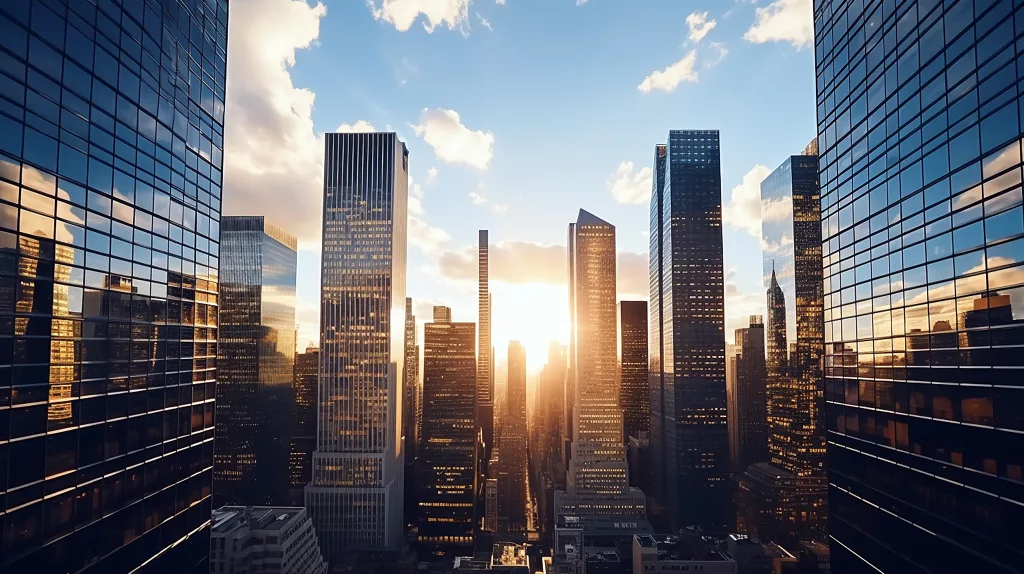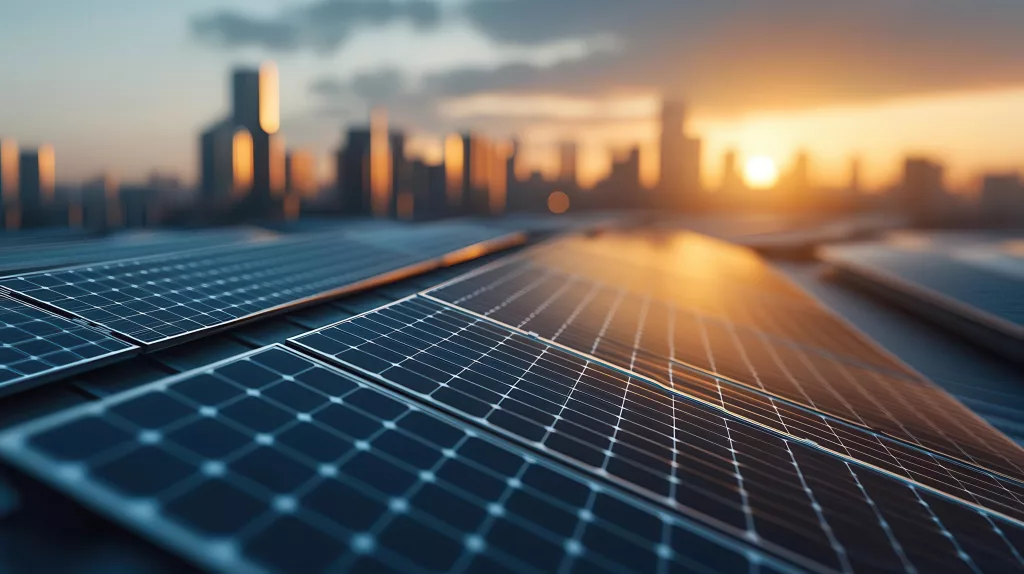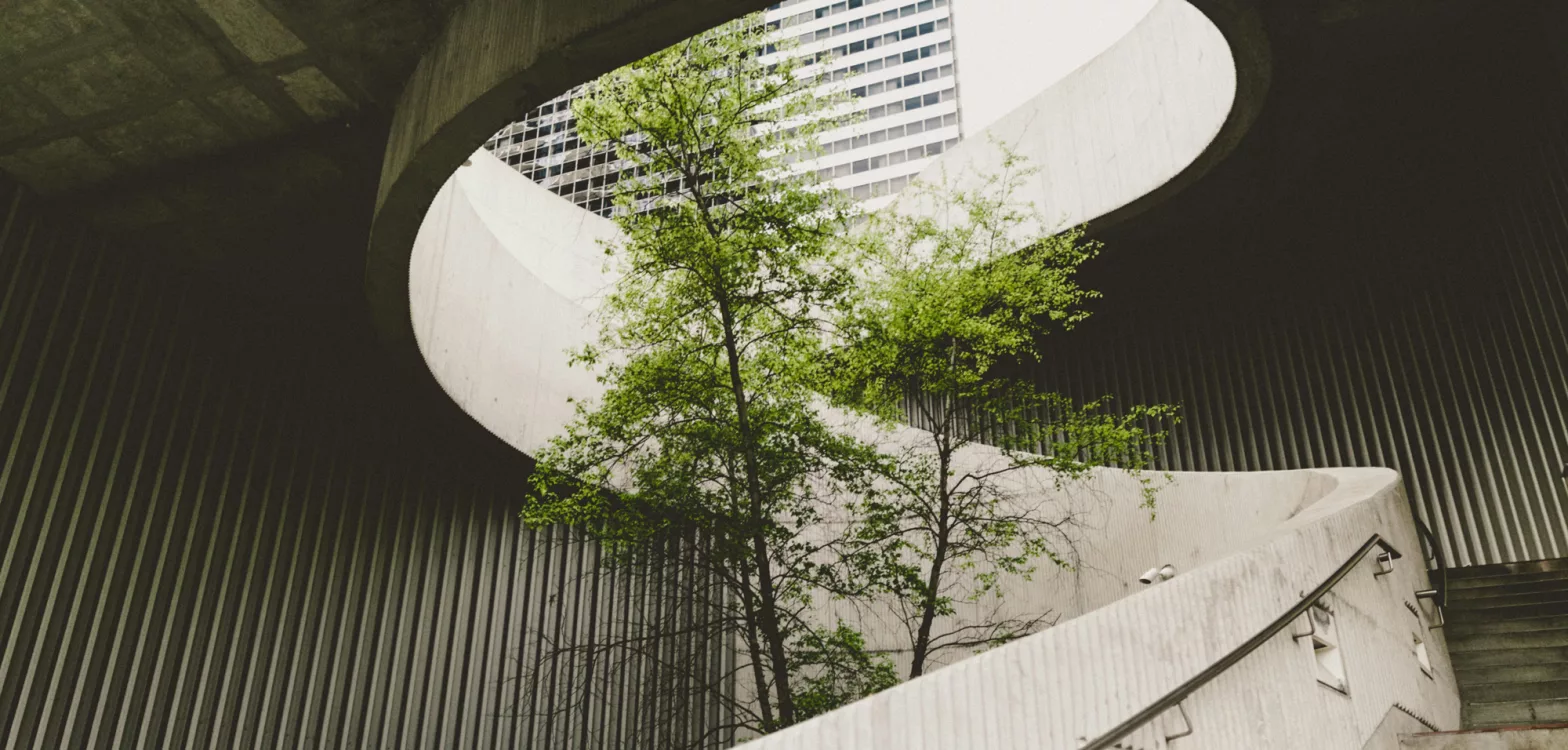Expect companies to invest more in sustainability, office efficiency and green design.
Sustainability is here to stay.
Two-thirds of businesses plan to boost sustainability spending in 2025, according to a global survey of 2,500 business leaders by the Capgemini Research Institute. Half of them said cost reductions were more important than revenue growth, and increased energy efficiency and material efficiency help reduce those costs.
The sustainable office is not just a passing trend. It’s a necessity—to employers, to real estate owners and the architects who design them. There is good reason: The built world accounts for an estimated 42% of global greenhouse gas emissions. This year, climate change is expected to accelerate, as we continue to face record-breaking temperatures, rising sea levels, and melting glaciers.

—Adobe Stock
Employers can meet their environmental and sustainability goals and create healthy spaces that attract employees. But there are other reasons why sustainability is top of mind. Landlords can create high-quality assets that enhance value and command higher rents.
“It’s not just that it’s the right thing to do,” says Stephanie Grayson, cofounder of AI startup Cambio, which helps commercial real estate companies improve energy efficiency and sustainability. “A sustainable business is a good business. It can drive financial returns.”
A number of companies have double-downed on their commitment to sustainability when it comes to their offices. Take for instance the Salesforce Tower in San Francisco, which has the largest onsite water recycling system in any U.S. commercial high-rise building, and an innovative HVAC system that circulates fresh outdoor air.
Apple built its Cupertino, California office to run on 100% renewable energy, using 4,300 hollow concrete slabs that help the building stay cool. The property also has 9,000 drought-tolerant trees.
—Unsplash
Microsoft incorporated low-emitting building materials into its Esterra Park office in Redmond, Washington, and the 13,200 square feet of dining halls there use 100% electric power.
Google employs a herd of goats to graze its office green areas and fertilize the grounds, and claims the most extensive geothermal pile system in North America.
Improving Existing Buildings
Not every commercial building can use goats or onsite water recycling systems. In fact, at least 97% of office buildings are considered older, and often they’re considered bad for the environment because they were largely built with less energy-efficient standards with older insulation, lighting, and HVAC systems that contribute to climate change. They require small upgrades to become more energy efficient and sustainable.
It can be cumbersome to determine what is needed and where to invest capital for those small upgrades. It might cost $10,000 to $50,000 to get a building engineer to walk the site, gather an energy usage profile of the building based on the building’s occupancy level, and estimate future performance.
A new proptech company, Cambio, automates that process using artificial intelligence to peruse millions of documents about a building or a portfolio of properties. It then identifies and prioritizes where landlords can make investments to improve sustainability.
Companies can take a few actions each year and drive that building efficiency. “It’s like your oil change in your car,” says Cambio’s cofounder Grayson.
The platform might single out that lower Manhattan building on Chambers Street, for instance, as the top priority in a real estate portfolio, and it might suggest upgrading its 30-year-old boiler with an electric steam boiler to get the most energy efficiency for the dollar.
Google named Cambio as one of the most disruptive climate tech and AI startups. The platform is live in 27 countries with trillions of dollars of assets under management and billions of square feet of office real estate. Grayson says clients typically reduce their utility spend by 10% to 30%.

—Adobe Stock
Rethinking the Office Remodel
While new construction is declining, experts expect to see an uptick in office space remodeling in 2025. Sustainability will be a big focus for those remodels.
One study by commercial real estate research company JLL found that 60% of employers plan office renovations and sustainability investments in the next five years. Corporate commitments drive some of it, but they’re also listening to changing employee expectations. Younger generations, in particular, choose to work and live in environments that demonstrate sustainability credentials.
Companies may weave that eco-friendly ethos into their office branding and design, using natural and recycled material and creating “destination places” centered around green spaces, according to JLL. One new sustainability trend is the idea of “science-led design,” or bringing research and data into the creative processes to understand how a building or place might perform, or to assess the impact it will have on people or the planet. JLL expects more companies to use that kind of data and AI to influence that design in 2025.
Avoiding Landfill Dumps
In some cases, rethinking the office remodel involves avoiding using drywall construction altogether. Some estimates suggest construction demolition of existing structures represents about 90 percent of construction landfill waste, according to a report by the Modular Building Institute. Construction waste contributes to 23% of all landfill waste—while the construction industry contributes to 37% of all emissions.
Landlords and tenants are increasingly turning to modular office designs, which include prefabricated walls and furniture and rooms that can be set up, reconfigured and moved depending on office needs. This is in part because traditional construction build-outs are expensive, time-consuming and inflexible to change.
— ROOM
Constructing a room from drywall can take months and cost anywhere from $10,000 to $40,000. A modular approach can save an average of $20 to $35 per square foot and be set up in days or hours. ROOM’s company ethos also centers on flexibility and sustainability: ROOM’s prefabricated products can help a company reduce their carbon footprint by as much as 33%, according to research by Columbia University.
A Higher Standard for Sustainability
Some architects are looking at sustainability of remodels and new construction projects from an even deeper point of view. One organization, Design for Freedom, inspires architects and designers not to just research products from a sustainability point of view, but to make the best effort to make sure they’re ethically sourced, that there is no slave labor, no mistreatment.
“That’s very hard to do,” says Diana Kellogg, architect with New York-based Diana Kellogg Architects, which has received critical acclaim for innovative designs in extreme weather conditions. “It’s about holistic sustainability, where we think of it in the whole context, rather than just this material, or just the solar panels or whatever it is. It’s being very conscious of what you’re doing and the impact that it has on our environment, our planet.”
While landlords, corporate leaders, architects and designers may be restricted by certain budgets and parameters in doing their jobs, their decisions can impact the built environment in a very substantial way.
“The building industry is the worst in terms of creating waste,” says architect Kellogg. “So if you have a choice, don’t tear the building down, use it if you can. Architects have been given the tools to do anything. If you’re passionate about it, we have the capacity to make social change.”
